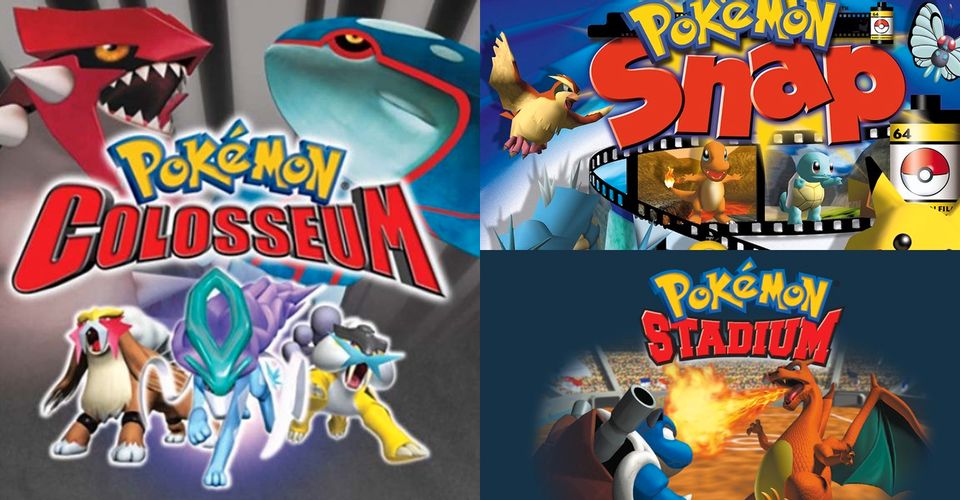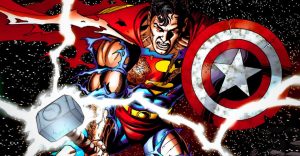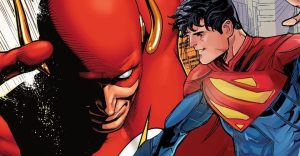10 Best Spinoff Pokémon Games, According To Ranker

In the gaming community, the Pokémon franchise is understandably known for its mainline JRPG series. While the anime and merchandise drive the IP, those games are what usher in each new generation for players. However, given the sheer size of the property, several spin-off games have come out over the years to fan affection.
They’re a great way to provide much-needed changes of pace and have palette cleansers in between main entries. Ranker’s voting community put together some of the franchise’s best, going as far as the IP’s early days in the gaming industry.
10 Pokémon Mystery Dungeon: Explorers Of Time/Darkness

Given the 25-plus years of the Pokémon franchise’s existence, some things aged poorly. To help keep players’ attention on the gaming side of things, expanding to different genres was inevitable. The Mystery Dungeon series took the inventive twist of putting the franchise into the rogue-like genre. When done right, these games can provide a compelling challenge and gameplay loop.
This time, players played as a Pokémon, and Explorers of Time and Darkness coincided with Diamond and Pearl to introduce the Sinnoh region species. Though the gameplay could be repetitive and didn’t fulfill the genre’s potential, they proved fun takes on the conventional games with a charming story.
9 Pokémon Mystery Dungeon: Rescue Team DX

Recent years have continued the argument for more Pokémon spin-off games, and Spike Chunsoft took the opportunity to remake their original Mystery Dungeon games for Nintendo Switch. Rescue Team DX was a single package that remade Red and Blue Rescue Team, giving the games a visually pleasing watercolor-like aesthetic.
The games received mixed critical reception, with critiques coming from the repetitive and grind-focused gameplay. However, the positives went toward being an overall improvement over the original pair’s features and mechanics.
8 Pokémon Trading Card Game

As far as merchandising goes, the official trading card game is one of the biggest appeals of the overall Pokémon franchise. Back in 1998 (Japan) and 2000 (global), The Pokémon Company took the opportunity to adapt the card game into gaming, releasing Pokémon Trading Card Game on the Game Boy Color.
Though unsurprisingly overlooked compared to all the other games in the catalog, it was released to strong critical reception. Critics and audiences cited its faithful adaptation of the original tabletop game in an accessible way, along with its entertaining gameplay loop, as the highest praises.
7 Pokémon XD: Gale Of Darkness

After the beloved cult-hit Pokémon Colosseum was released on GameCube, it got a direct sequel in the form of XD: Gale of Darkness. The game followed up on the Shadow Pokémon concept of its predecessor while expanding the roster of obtainable creatures.
The game couldn’t quite repeat the first game’s positive reception, rather, receiving a more mixed one due to recycling too many elements from Colosseum. Nonetheless, XD: Gale of Darkness and its iconic Shadow Lugia made for a fan-favorite duology along with the original.
6 Pokémon Stadium 2

The Pokémon Stadium games were a great offer in a time when 3D models were ambitious for the gaming franchise. Stadium 2 came as a complement to the releases of Gold, Silver, and Crystal to bring straightforward 3D turn-based battles to the Johto region. The added roster of 100 species from the second generation, and Game Boy/Game Boy Color connectivity, made it an assured hit in 2000/2001.
Along with the turn-based strategy, more minigames were also added for further co-op multiplayer incentives. With the games fully in 3D in the modern-day, it can be argued these games are now redundant. However, there could be some arguments for the Pokémon Stadium games to get remasters or a reboot for Switch.
5 Pokémon Snap

Arguably the biggest fan-favorite spin-off game in the franchise was Pokémon Snap for the Nintendo 64. The game received a lovingly crafted sequel for the Switch in New Pokémon Snap, but the original was a novel idea for the IP. It was a genius concept, as the appeal of this franchise was discovering fascinating new species, so making a safari rail-shooter game translated smoothly.
Even though the original game was fairly short, it’s an endlessly charming one. The aforementioned Switch sequel brilliantly took everything that made the original so beloved and improved upon it, including the breathtaking visuals.
4 Pokémon Mystery Dungeon: Red/Blue Rescue Team

Spike Chunsoft’s Mystery Dungeon: Red and Blue Rescue Team started the franchise’s inventive take on the Pokémon world. The former was released for the Game Boy Advance and the latter on the Nintendo DS.
The two had some connectivity features, but the decision to have one game on the last generation handheld admittedly held them back. However, both games still managed to be fun changes to the traditional formula, giving the players the perspective of playing as a Pokémon. Like its sequels, the story was a surprisingly heartfelt one.
3 Pokémon Mystery Dungeon: Explorers Of Sky

Though the “third-version” game formula was typically reserved for the mainline series, the Sinnoh region Mystery Dungeon games got one in Explorers of Sky. Like with the main games, this enhanced version keeps the general story beats of its predecessors intact, with some minor differences.
In terms of gameplay features, it added four new playable starters, new locations, and a post-game questline involving the legendary Shaymin. It had one of the starkest contrasts between critics and general audiences, as the former generally labeled it as average for its recycled gameplay. Meanwhile, Explorers of Sky is often regarded amongst the fan base as the best in the series.
2 Pokémon Colosseum

The best Pokémon games are typically the mainline ones, but Colosseum on the GameCube was a worthy spinoff that retained the JRPG foundation. Fans today still hold it in high regard for doing so while going off the beaten path on standard generation games. Bringing players to a new region populated by an assortment of generations 1-3 Pokémon was a welcome change of pace.
In terms of combat, one of the twists was every battle being a double-battle format, something introduced in Ruby and Sapphire. Likewise, it invented the aforementioned “Shadow Pokémon” mechanic to add a new dynamic to catching and training. Perhaps one of its few flaws was having such a limited roster of catchable species, as wild battles were removed.
1 Pokémon Stadium

Even more so than its sequel, Pokémon Stadium was revolutionary for its time since Red, Blue, Green, and Yellow were extremely limited by what the original Game Boy could handle. Allowing connectivity between the handheld and the N64 was a thrilling proposition for fans avidly playing and collecting Pokémon on their generation 1 games.
Though, players could always make custom teams if they didn’t have the corresponding controller pak. Stadium lets players battle Gym Leaders, Elite Four, and friends in couch co-op 3D battles along with some Mario Party-style minigames.
About The Author

















